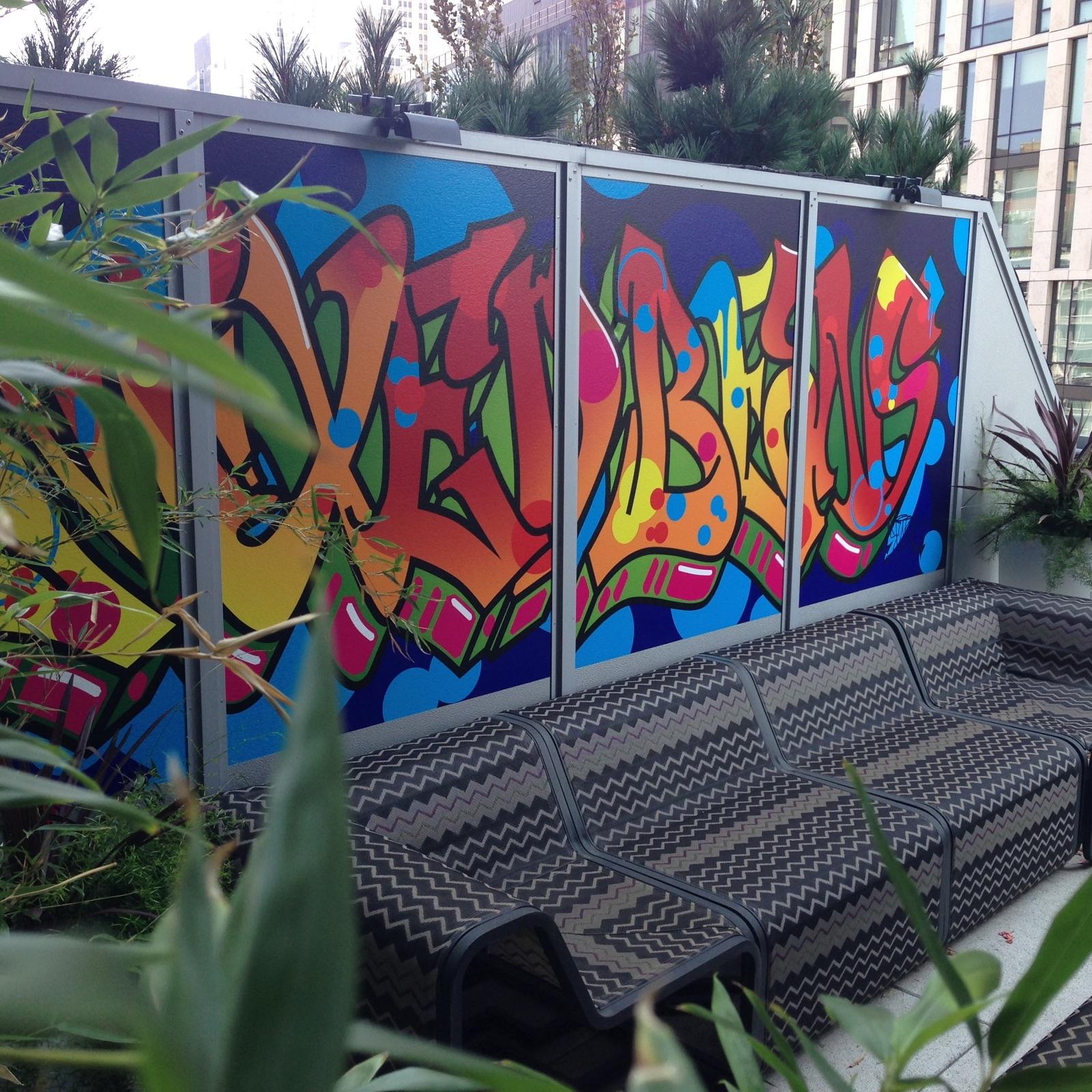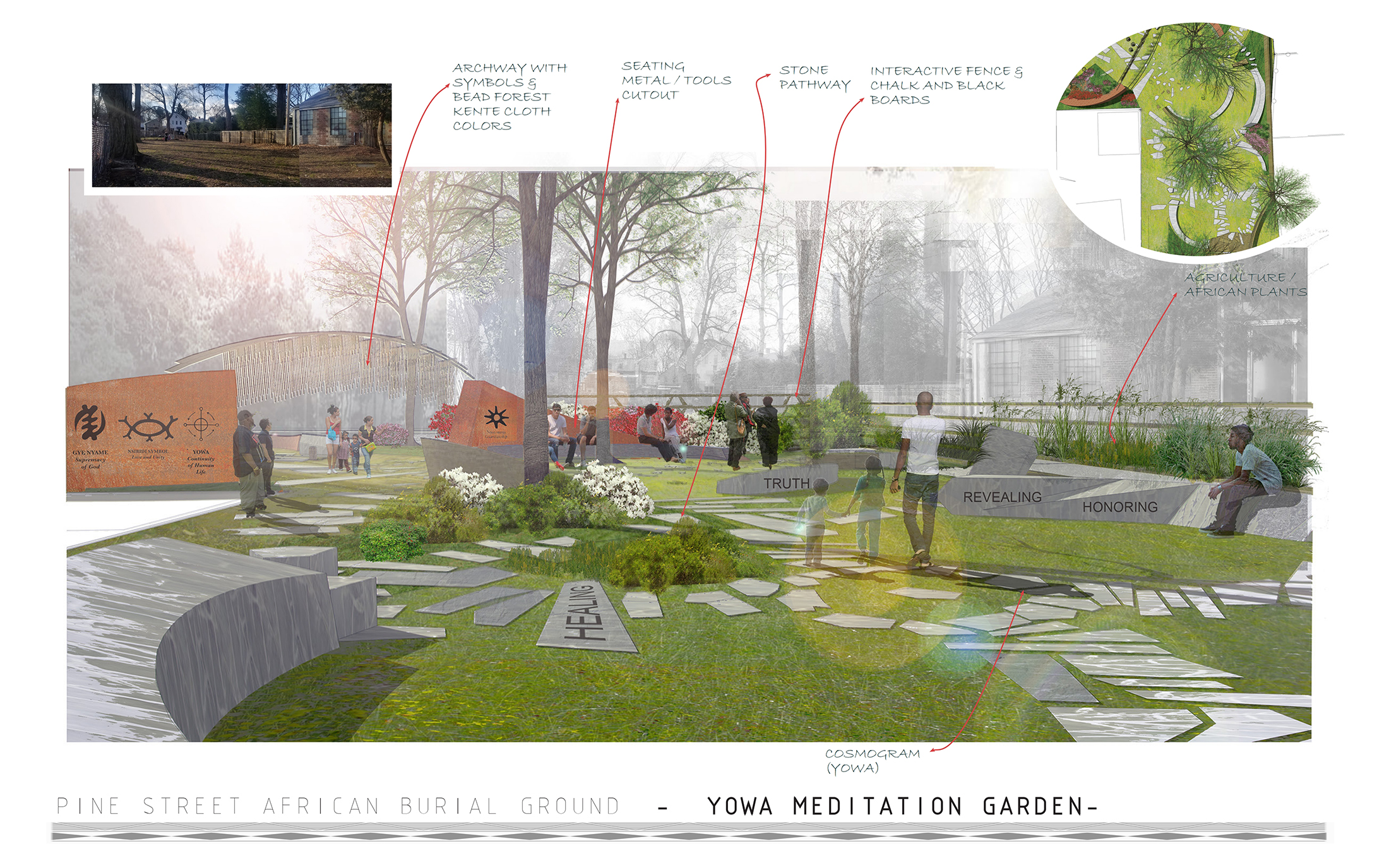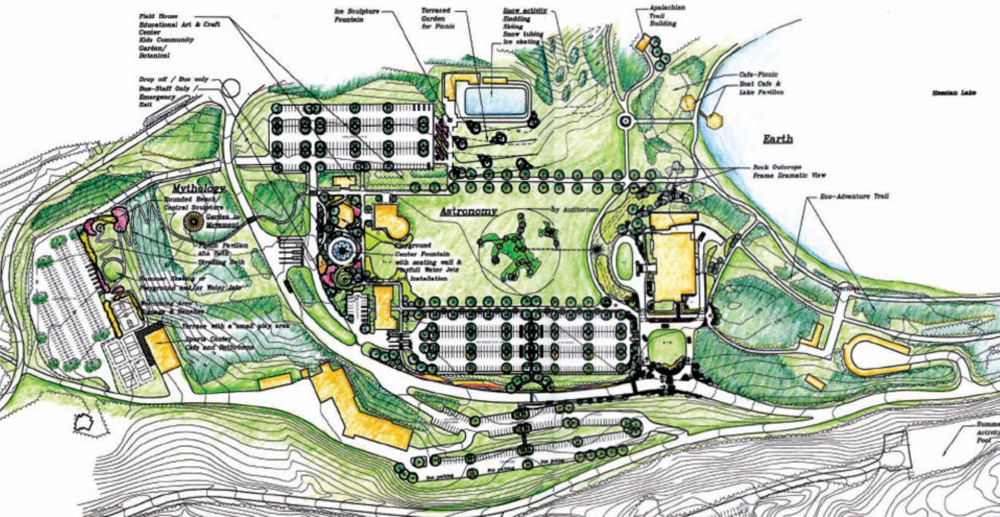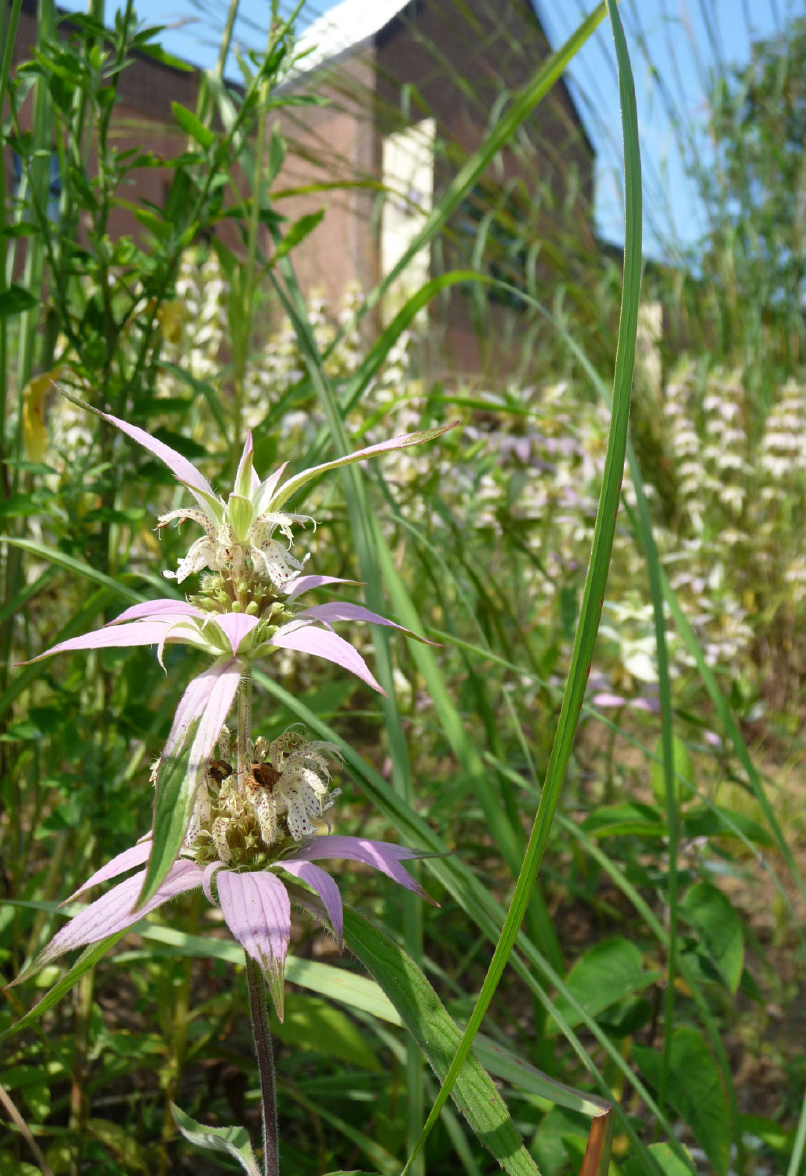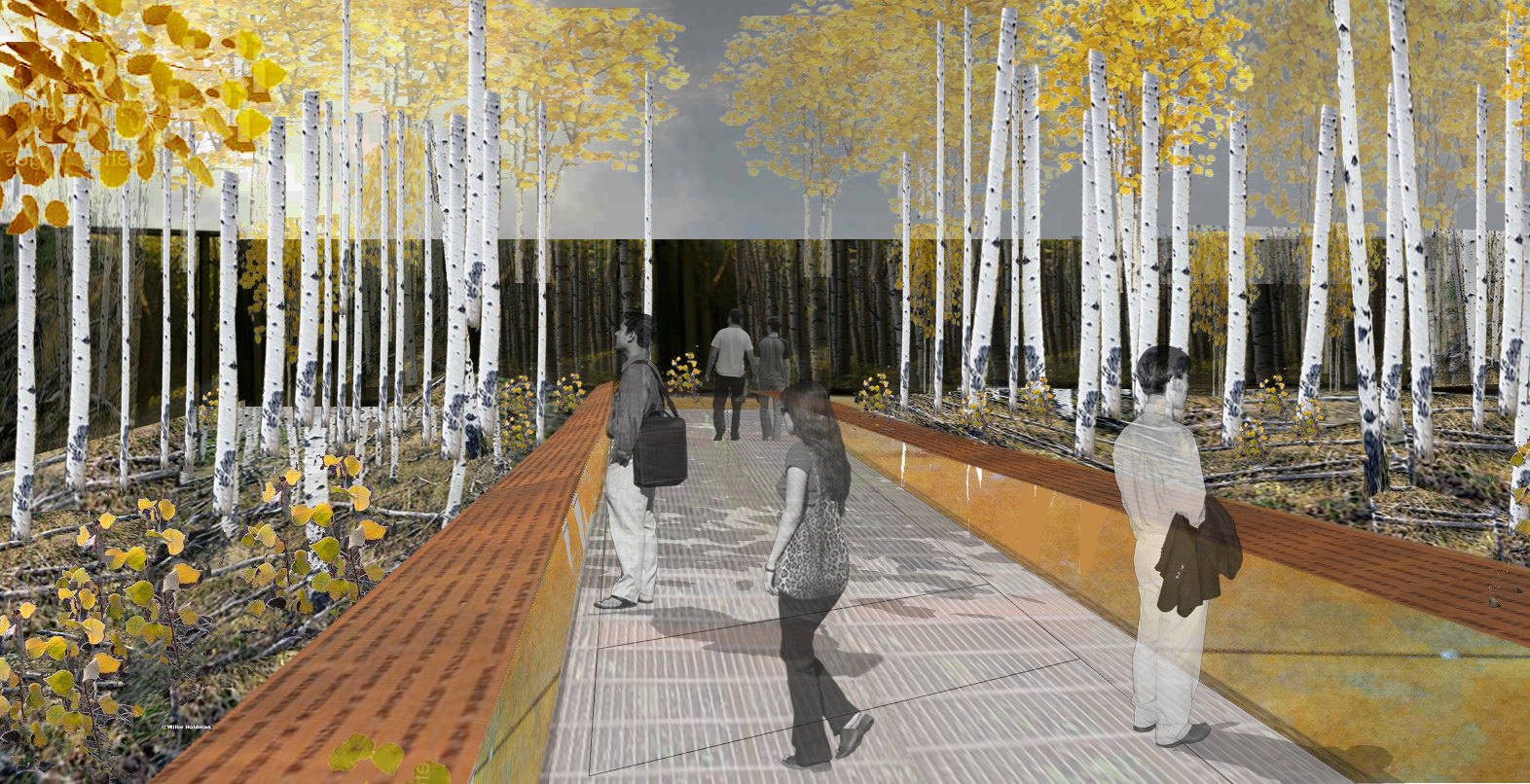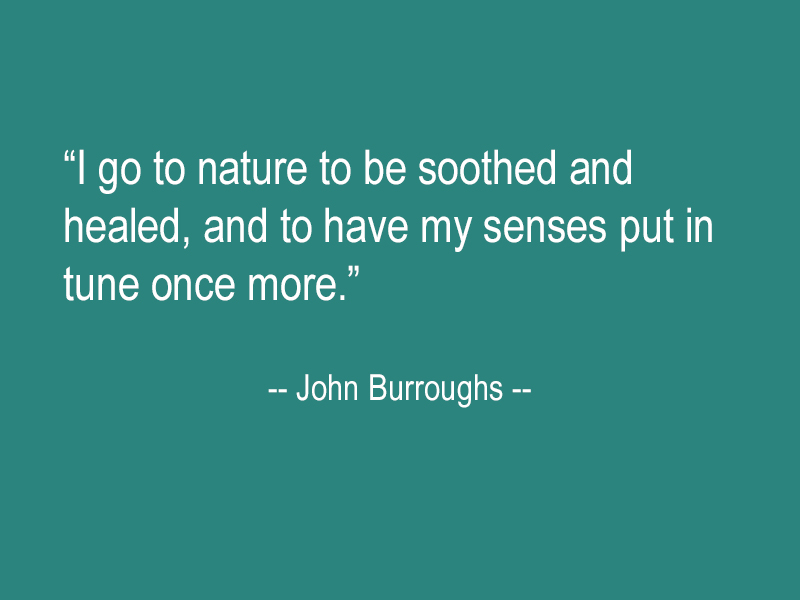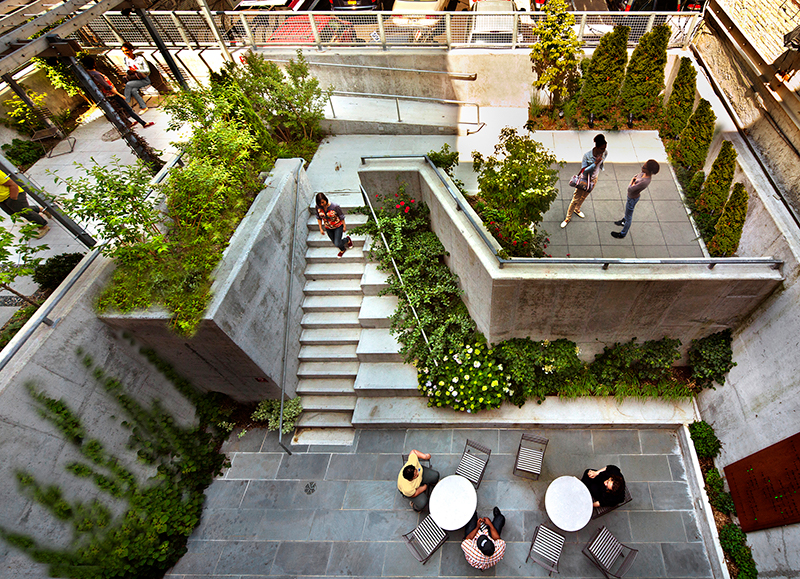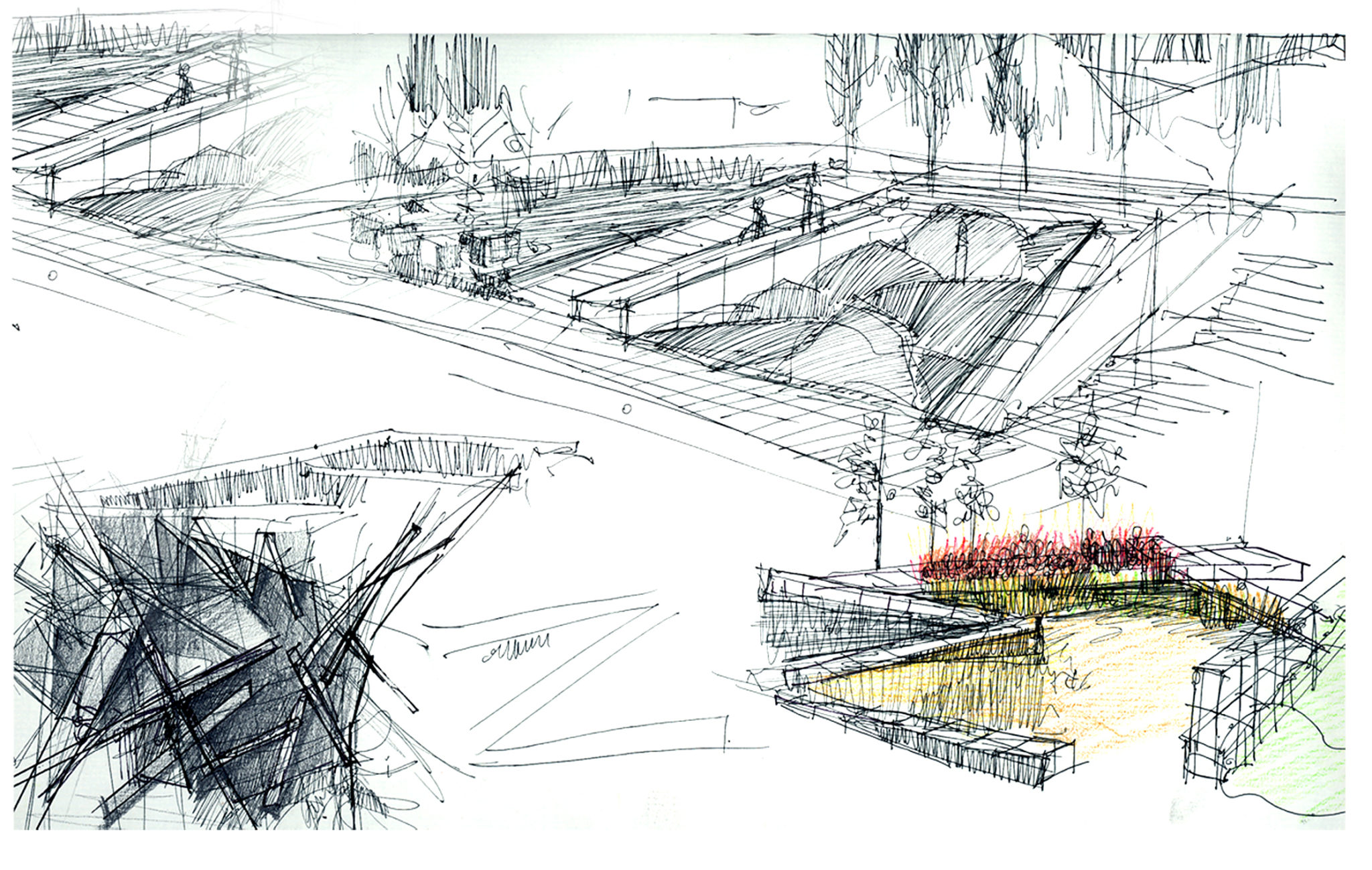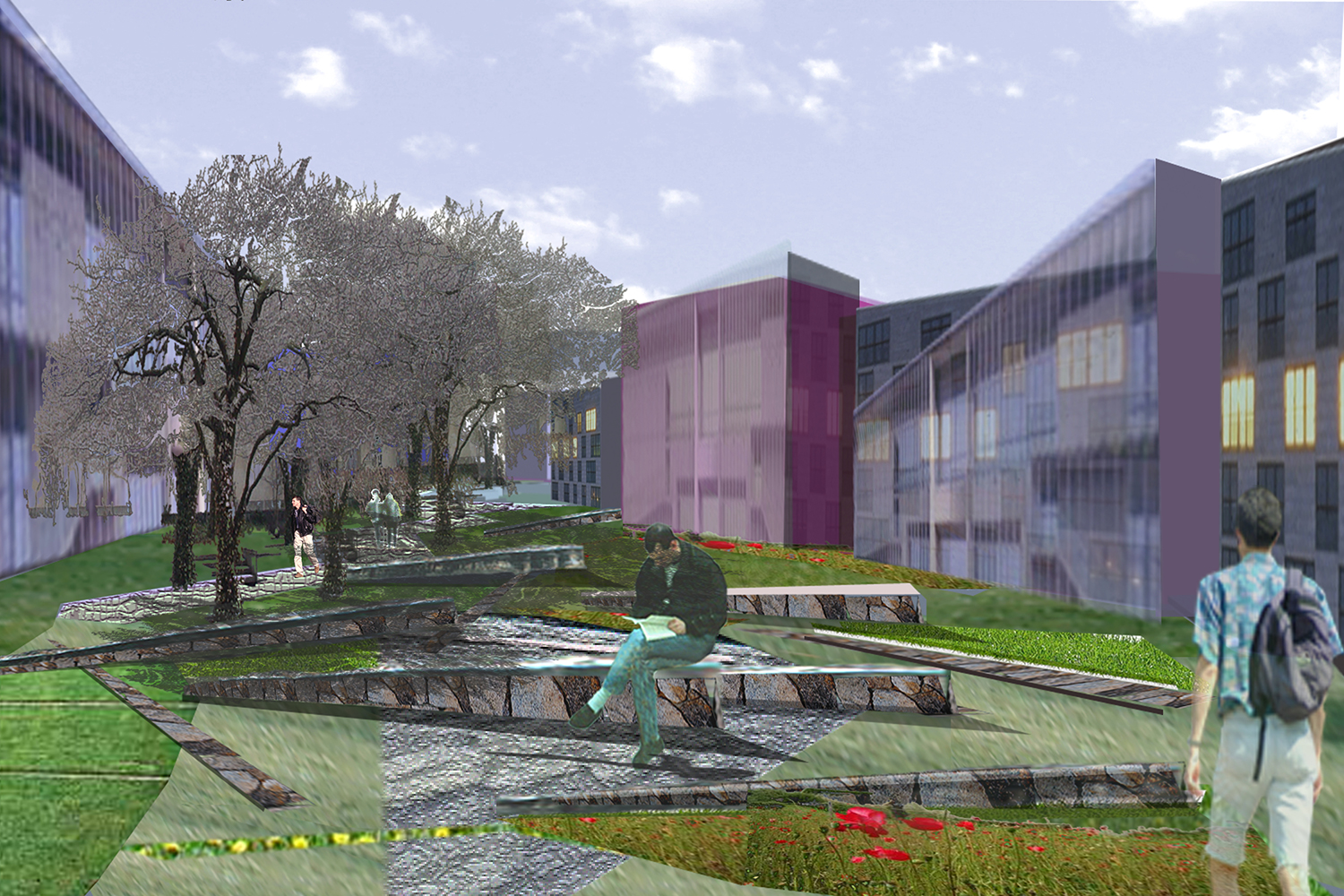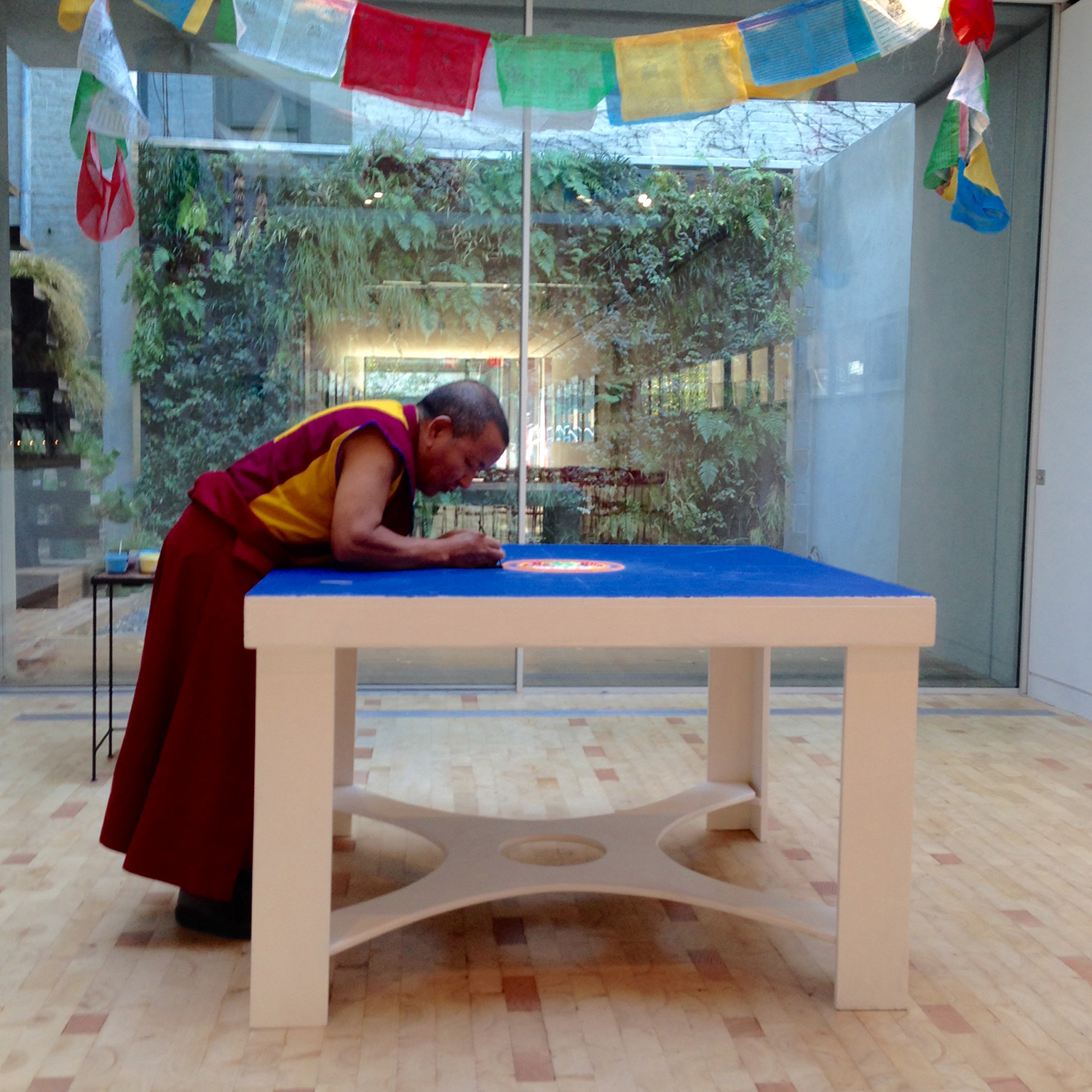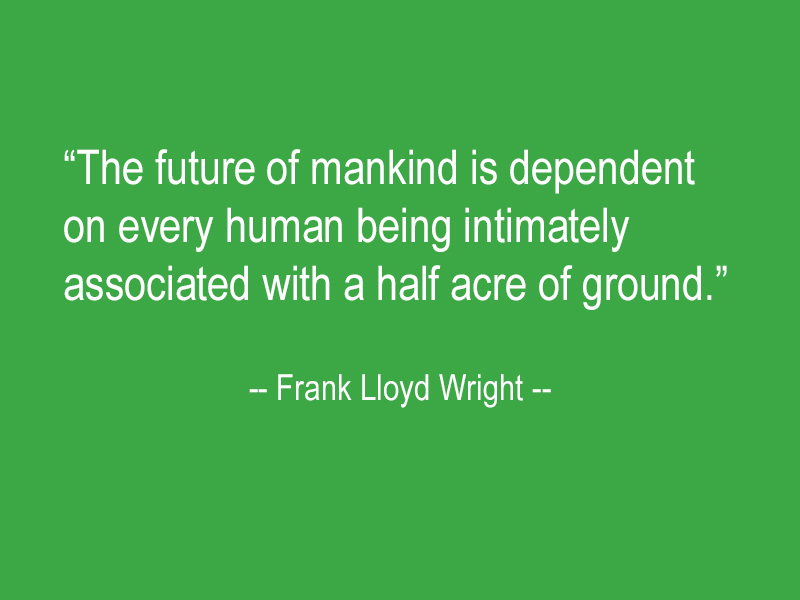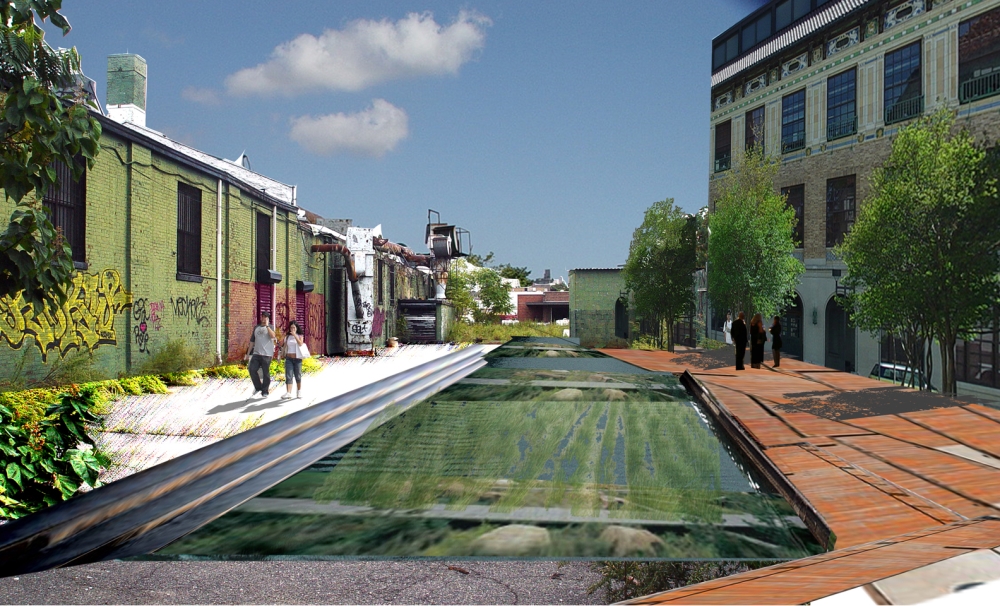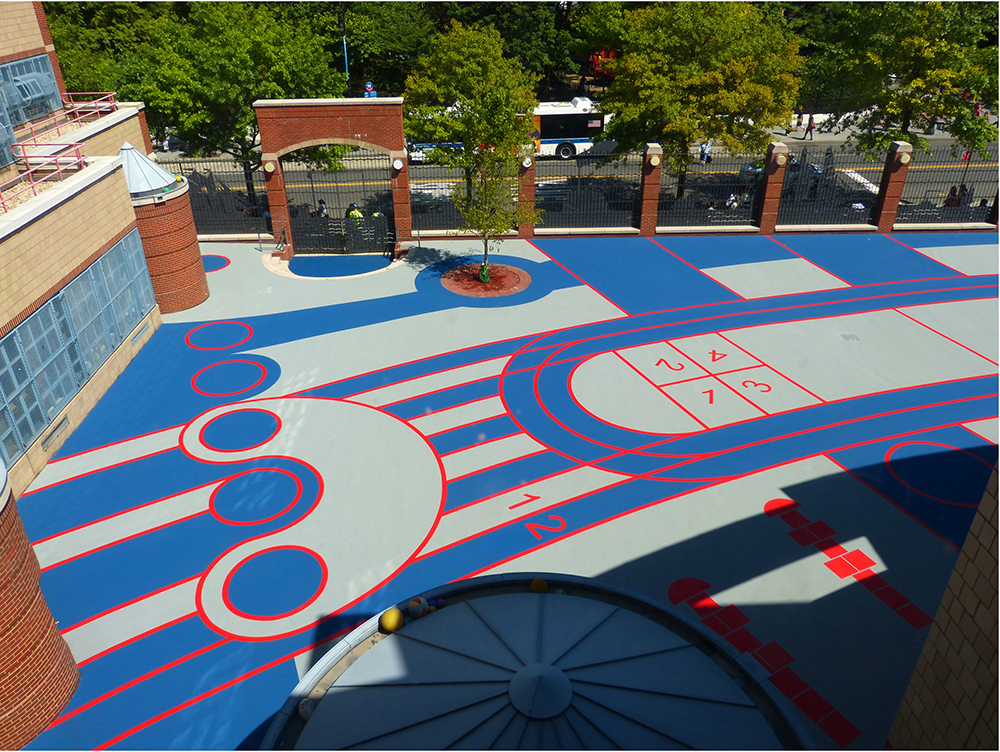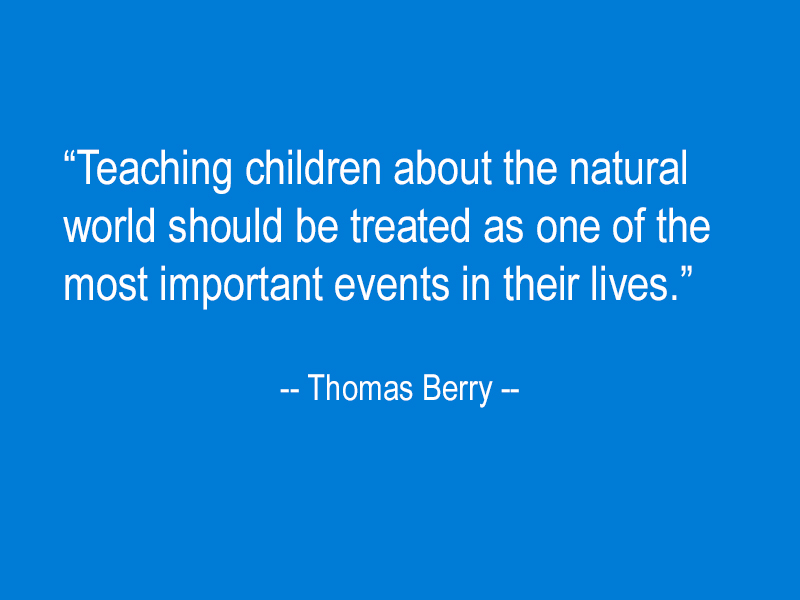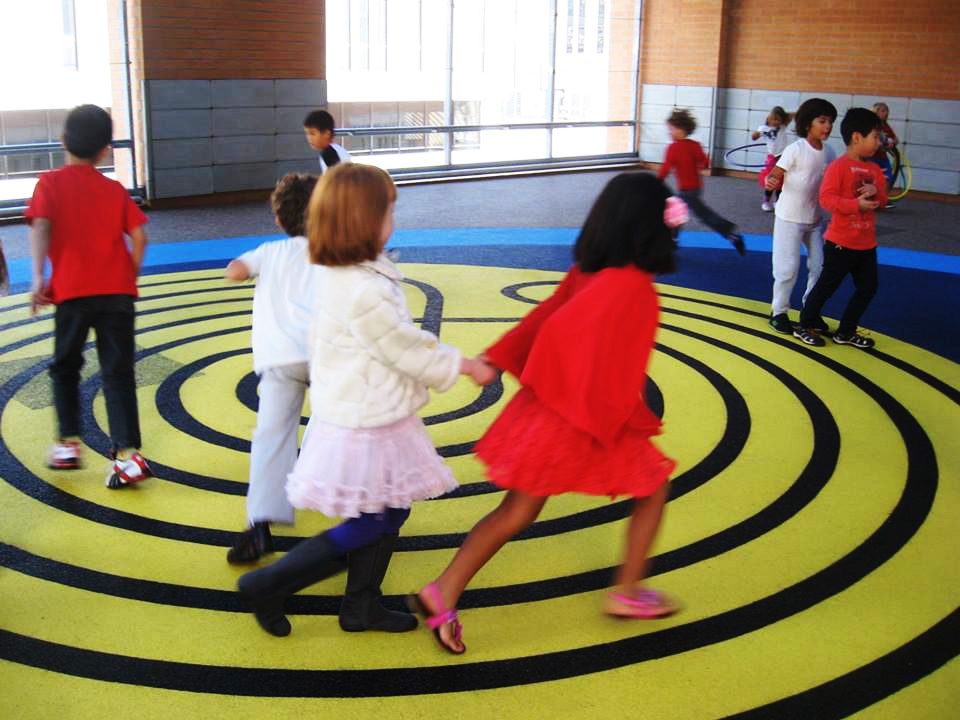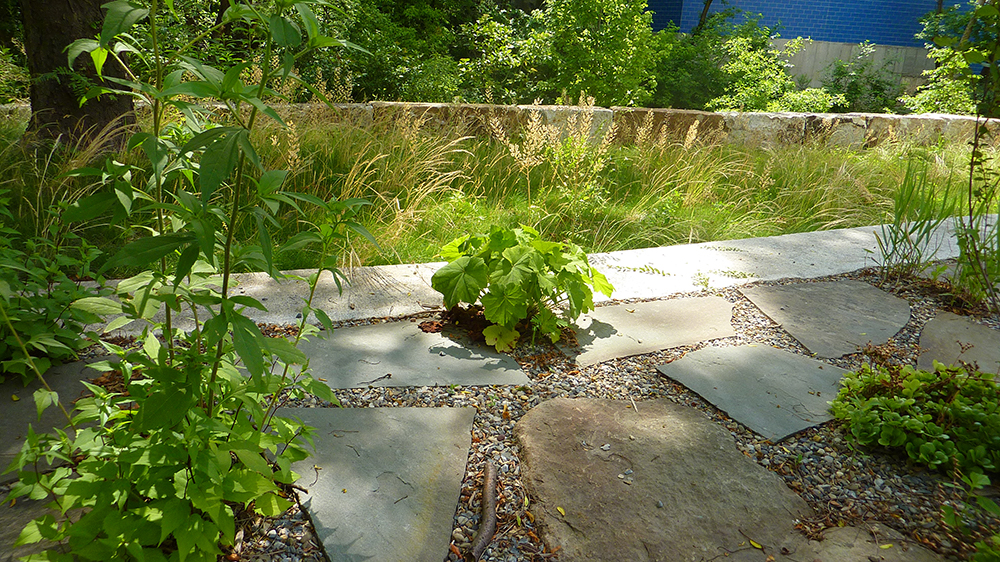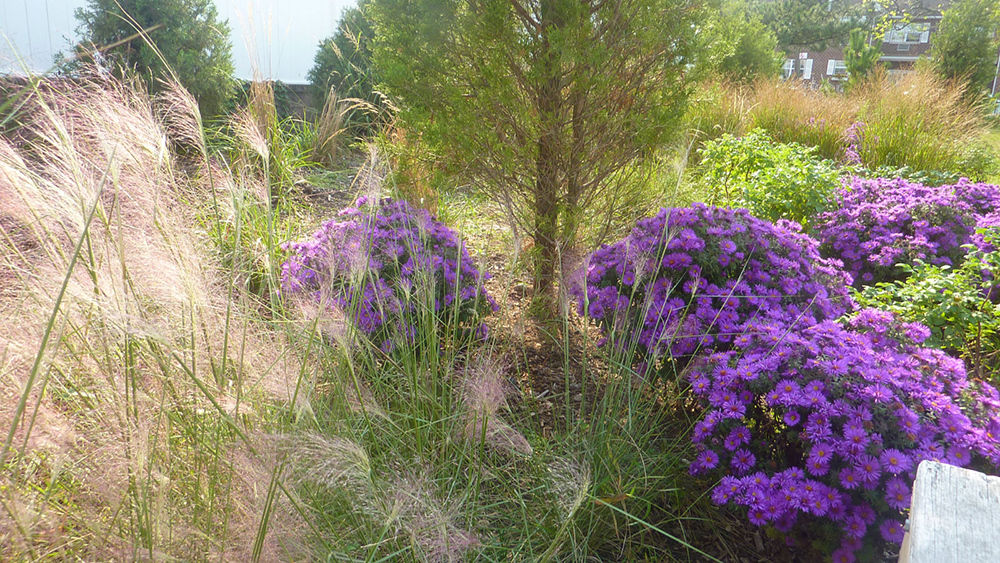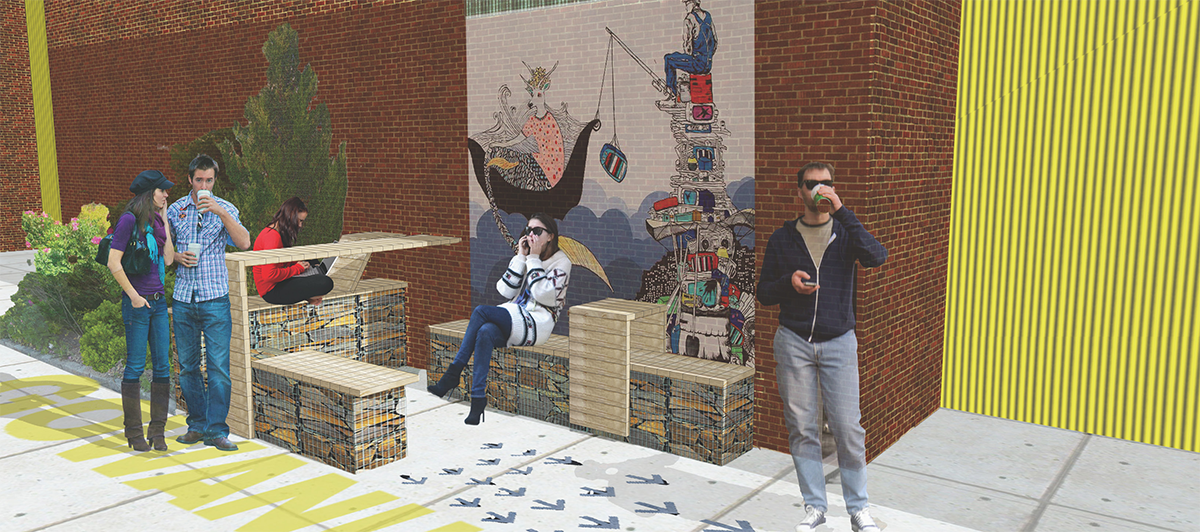
DEGRAW STREET
The Degraw & Nevins Street Gardens project will bring much needed public green space to the Gowanus Canal waterfront while helping to reduce combined sewer overflows into the Canal.
The design provides retention and filtration of the rain water while beautifying the neighborhood, creating planting and gathering areas for the community.
The Degraw Street Bioswales project, described in this application, will install a series of bioswale gardens along a section of Degraw Street within the combined sewer district, one block from the Gowanus Canal. The gardens will both enhance a neglected Gowanus street end and retain and filter stormwater runoff generated from the surrounding impermeable surfaces. This project is intended to demonstrate the ability of green infrastructure to reduce combined sewer overflow (CSO) volumes and to promote the cleaning and filtration of storm water through green infrastructure technology. There is currently a high priority for green infrastructure programs in the Gowanus Watershed; the street-end bioswales we are proposing will contribute to the cleansing and habitat restoration of the Gowanus Canal.
The proposed project is entirely located within a combined sewer drainage area that discharges into the Gowanus Canal during severe wet weather events. This proposal addresses stormwater runoff originating on street and sidewalk surfaces along the public right of way of Degraw Street. This project is being spearheaded by the Gowanus Canal Conservancy (GCC), a Brooklyn-based environmental non profit 501(c)(3). The proposed bioswales are all located on public sidewalks and have the enthusiastic support of the adjacent landowners (see attached letters of support, Figures 11-13).
The project can be constructed within 12 months of breaking ground. The proposal will also significantly reduce the quantity of impervious surfaces within the target drainage area effectively removing over 65% of stormwater runnoff from the contributing area to the local sewer system. This proposal also incorporates a significant, optional, monitoring component, which will evaluate the effectiveness of this project at absorbing and filtering stormwater for a cost/benefit comparison against other green and gray infrastructure strategies.
The proposed work will route runoff originating on impervious street and sidewalk surfaces into twelve depressed curbside bioswales constructed in the existing sidewalk space. Table 1 lists the area and dimensions of each of the proposed bioswales and its associated catchment. Also shown is the percentage of several significant one hour storm depths that would be completely retained in each of the bioswales.
Note that this calculation is conservative because it neglects a) water that infiltrates and/or evaporates during the one hour storm and b) the storage capacity of soil pores (i.e. the calculation considers only the depression storage).
Gowanus The bioswales will be planted with a variety of native plants commonly found in wet site marsh communities that can also withstand periods of prolonged drought. The diversity of plantings in the bioswales will create attractive gardens with great educational value for the community while additionally providing critical habitat for local wildlife. Please refer to Table 2 for the proposed plant list. All plantings will be installed according to the drawings depicted in Figures 5-6 and the following specifications in masterspec format; 329300 Exterior Plants for planting methods, precautions and bioswale soils.
The main function of the proposed bioswales is to help enhance the water quality of the Gowanus Canal by trapping stormwater that would otherwise discharge to the combined sewer system and contribute to CSO events in the Canal. We strongly believe that this project will provide many additional benefits to the surrounding community, including: enhanced air and water quality, reduced ambient temperatures, increased recreational opportunities and the establishment of wildlife habitat. To that end, we think that Degraw Street presents an excellent opportunity for expanded biofiltration gardens with modest site amenities.
The proposed bioswales are designed to intercept stormwater as it flows down the street away from the Canal, towards the local low point at the intersection of Degraw and Nevins Streets. Our design places interconnected bioswales along the North and South edges of Degraw Street, accommodating existing driveways and sidewalks. A large rain garden space is proposed at the end of the street, which receives water through sub surface french drains and surface runoff. The design opportunistically utilizes materials presently and historically found in the region, such as native plants, locally cast concrete blocks, and improvised seating. All walking surfaces within and adjacent to the bioswales will be made of permeable pavers, working in concert with the rain gardens to trap and filter local stormwater before it flows into a catch basin and enters the combined sewer system.
The bioswales will be interlinked with sub-surface pipes and equipped with emergency overflows into the sewer system. They are protected from vehicular traffic with large concrete blocks and incorporate intermediate permeably-paved surfaces that will allow pedestrians to cross the gardens safely.
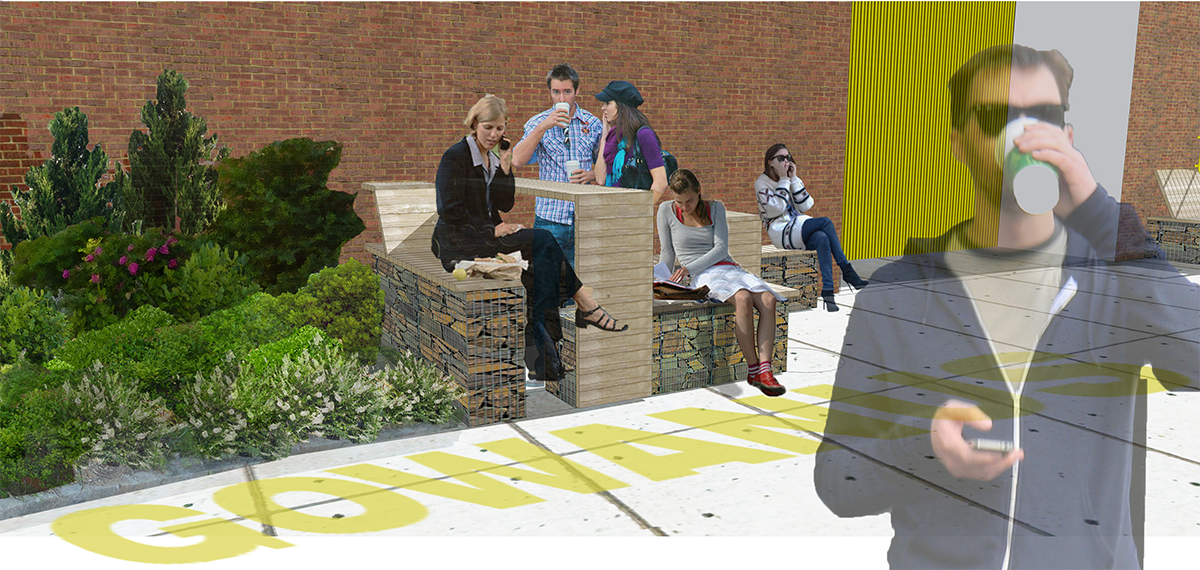
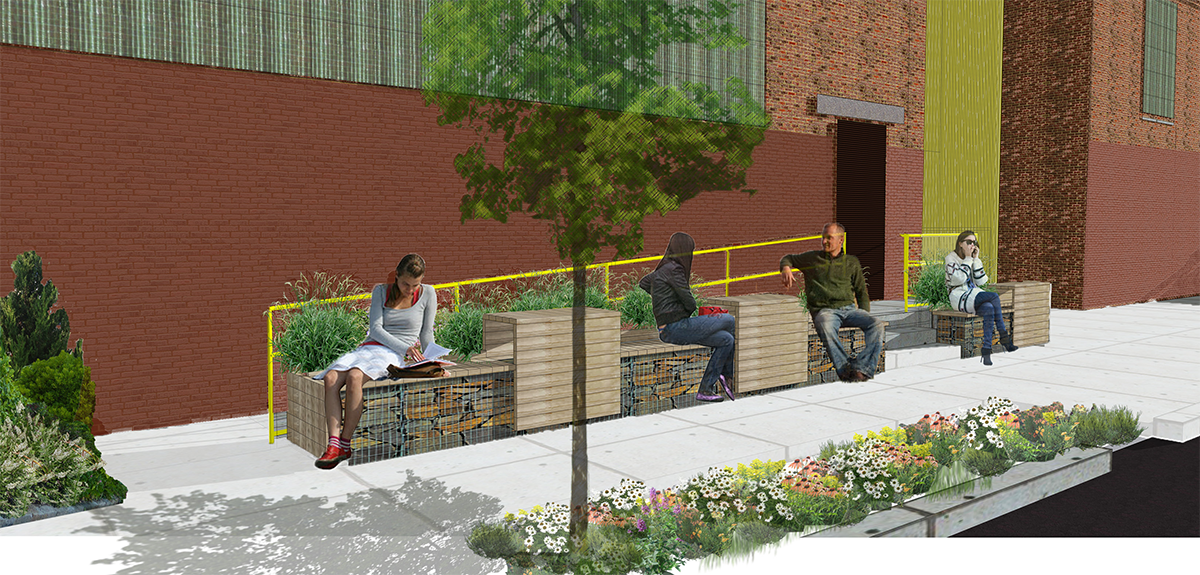
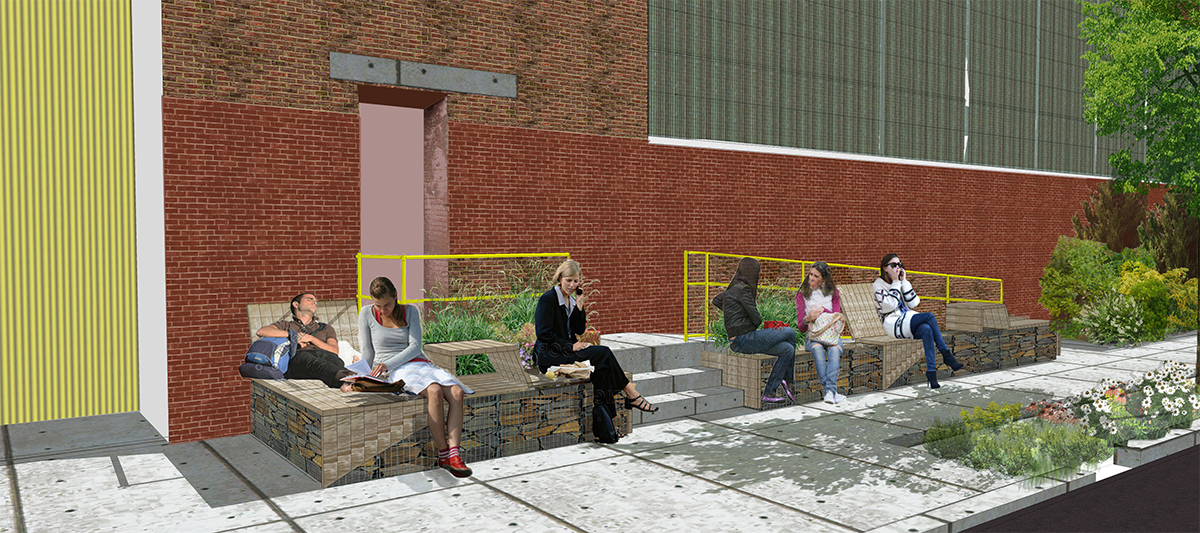
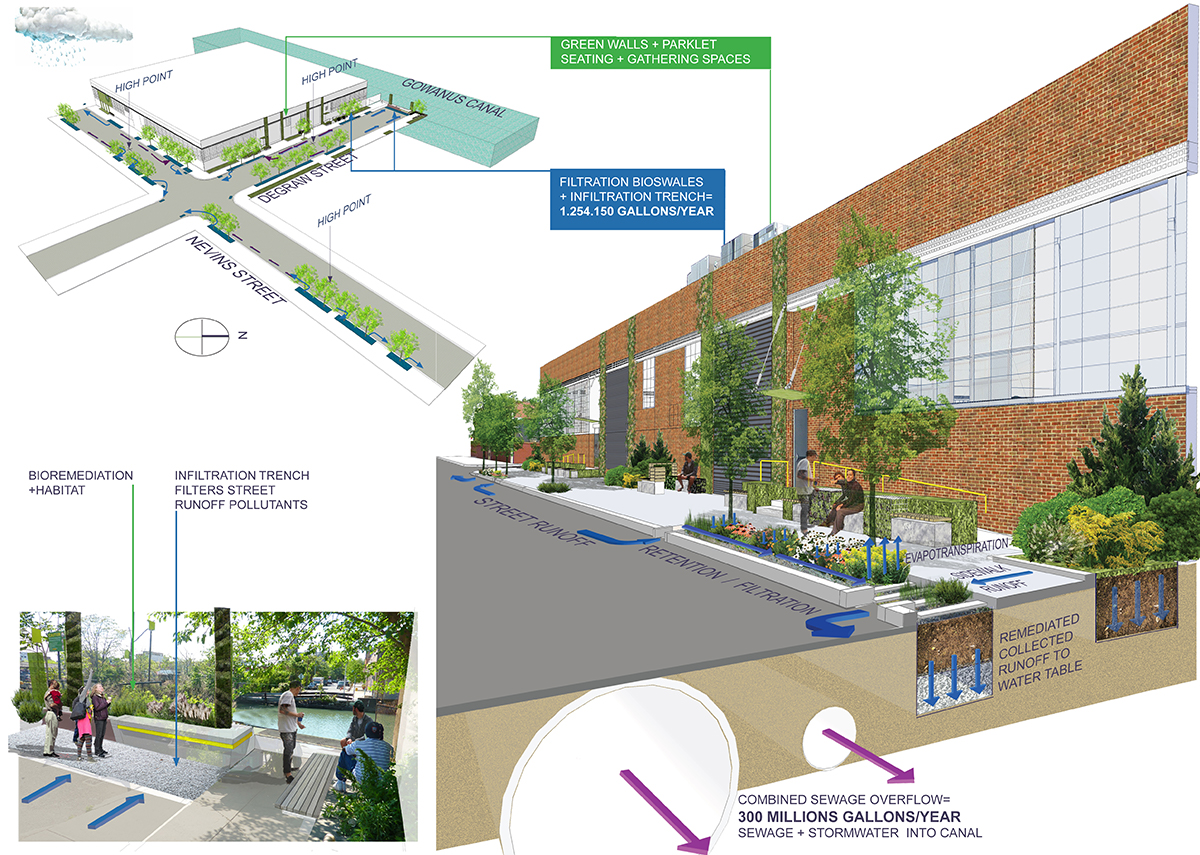
CHAMBERS STREET
RESIDENTIAL ROOFTOP TERRACENOSTRAND AVENUE RESIDENCE
GREEN ROOFBEAR MOUNTAIN STATE PARK & BEAR MOUNTAIN INN
MASTER PLANALBANY PINE BUSH PRESERVE AND DISCOVERY CENTER
NATIVE HABITAT & EDUCATIONAL LANDSCAPENEW YORK AIDS MEMORIAL PARK
COMPETITIONJohn Burroughs
InspirationDEGRAW STREET
Bioswales and Street GardenTRUE COLORS INTERGENERATIONAL RESIDENCE
SUPPORTIVE HOUSINGPlato
InspirationGOWANUS CANAL SKETCHES: NEIGHBORHOOD PARK
NEIGHBORHOOD PARKCITY COLLEGE SOUTH CAMPUS
SOUTH CAMPUS CONCEPTUAL MASTER PLANHAPPY LUCKY NI GALLERY – GREEN WALL
PATIO AND GREEN WALLCHAMBERS STREET
RESIDENTIAL ROOFTOP TERRACEPOLISH AND SLAVIC CENTER
GREEN ROOF AND COMMUNITY ROOF GARDENFrank Lloyd Wright
InspirationGOWANUS CANAL SKETCHES: NEIGHBORHOOD CONNECTIONS
NEIGHBORHOOD CONNECTIONSDEMOCRACY PREP CHARTER SCHOOL
SCHOOL COURTYARDBRONX RIVER ART CENTER
GREENROOFPS 234 INDEPENDENCE SCHOOL
SCHOOLYARDThomas Berry
InspirationSPRUCE STREET SCHOOL
ROOFTOP PLAYGROUNDBRONX RIVER ART CENTER
RIPARIAN EDUCATIONAL GARDEN AND OUTDOOR CLASSROOMROCKAWAY INSTITUTE FOR A SUSTAINABLE ENVIRONMENT
NATIVE COASTAL EDUCATIONAL GARDEN
Bioswales and Street Garden

